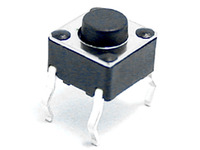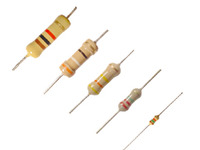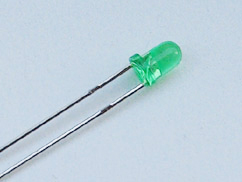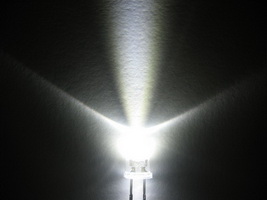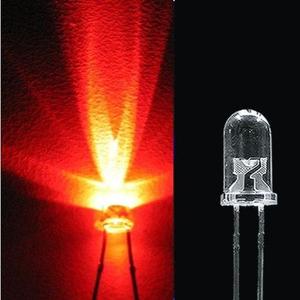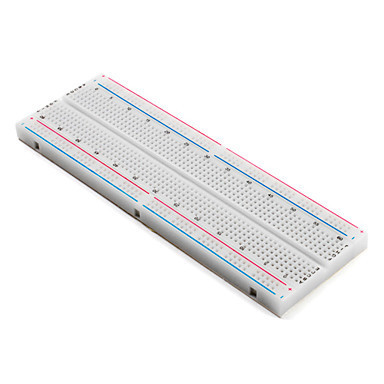Simple Arduino Based Memory Game on Breadboard
A beginner-level Simon-says type memory game. A great 1 day project to entertain and impress your friends!Steps
Categories
Status: Active
The Arduino code Step 5 of 5
The Arduino code is below. It is also available in the attachments:
// this constant won't change:
const int buttonPin1 = 2; // the pin that the left pushbutton is attached to
const int buttonPin2 = 3; // the pin that the right pushbutton is attached to
const int buttonPin3 = 4; // the pin that the right pushbutton is attached to
const int buttonPin4 = 5; // the pin that the right pushbutton is attached to
const int ledPin1 = 7; // the pin that the left LED is attached to
const int ledPin2 = 8; // the pin that the right LED is attached to
const int ledPin3 = 9; // the pin that the right LED is attached to
const int ledPin4 = 10; // the pin that the right LED is attached to
const int speakerPin = 12; // the pin that will be used for speaker output
const int tones[] = {1915, 1700, 1519, 1432, 2700}; // The last tone is the fail tone
// Variables will change:
int buttonState[] = {0,0,0,0}; // current state of the button
int lastButtonState[] = {0,0,0,0};
int buttonPushCounter[] = {0,0,0,0};
void playTone(int tone, int duration) {
for (long i = 0; i < duration * 1000L; i += tone * 2) {
digitalWrite(speakerPin, HIGH);
delayMicroseconds(tone);
digitalWrite(speakerPin, LOW);
delayMicroseconds(tone);
}
}
void setup() {
// initialize the button pin as a input:
randomSeed(analogRead(0));
pinMode(buttonPin1, INPUT);
pinMode(buttonPin2, INPUT);
pinMode(buttonPin3, INPUT);
pinMode(buttonPin4, INPUT);
// initialize the LED as an output:
pinMode(ledPin1, OUTPUT);
pinMode(ledPin2, OUTPUT);
pinMode(ledPin3, OUTPUT);
pinMode(ledPin4, OUTPUT);
pinMode(speakerPin, OUTPUT);
// initialize serial communication:
// Serial.begin(9600);
}
int gamestate = 0;
int waitingforinput = 0;
int currentlevel = 1; // This is the level (also the number of button presses to pass to next level)
long randnum = 0; //initialize long variable for random number from 0-100.
int randnumint = 0; //initialize random integer for loop. Will be from 1-4 later.
int butwait = 500; //amount of time to wait for next button input (ghetto de-bounce)
int ledtime = 500; //amount of time each LED flashes for when button is pressed
int numlevels = 10; //number of levels until the game is won
int pinandtone = 0; //This integer is used when the sequence is displayed
int correct = 0; //This variable must be 1 in order to go to the next level
int speedfactor = 5; //This is the final speed of the lights and sounds for the last level. This increases as more games are won
int leddelay = 200; //Initializing time for LED. This will decrease as the level increases
void loop() {
int numarray[numlevels];
int userarray[numlevels];
//The following clears out both arrays for new games
int i;
if (gamestate == 0){
for (i = 0; i < numlevels; i = i + 1) {
numarray[i]=0;
userarray[i]=0;
randnum = random(1,100);
if (randnum <= 25) {
randnumint = 0;
}
if (randnum > 25){
randnumint = 1;
}
if (randnum > 50){
randnumint = 2;
}
if (randnum > 75){
randnumint = 3;
}
numarray[i]=randnumint;
// Serial.println(numarray[i]);
}
if (i == numlevels){
gamestate = 1;
}
}
//The following will show the user the current sequence
if (waitingforinput == 0){
delay (200);
i = 0;
for (i = 0; i < currentlevel; i= i + 1){
leddelay = ledtime/(1+(speedfactor/numlevels)*(currentlevel - 1));
pinandtone = numarray[i];
digitalWrite(pinandtone+7, HIGH);
playTone(tones[pinandtone], leddelay);
digitalWrite(pinandtone+7, LOW);
delay(100/speedfactor);
}
waitingforinput = 1;
}
i = 0;
int buttonchange = 0;
int j = 0; // This is the current position in the sequence
while (j < currentlevel){
while (buttonchange == 0){
for (i = 0; i < 4; i = i + 1){
buttonState[i] = digitalRead(i+2);
buttonchange = buttonchange + buttonState[i];
}
}
for (i = 0; i < 4; i = i + 1){
if (buttonState[i] == HIGH) {
digitalWrite(i+7, HIGH);
playTone(tones[i], ledtime);
digitalWrite(i+7, LOW);
waitingforinput = 0;
userarray[j]=i;
buttonState[i] = LOW;
buttonchange = 0;
}
}
if (userarray[j] == numarray[j]){
j++;
correct = 1;
}
else{
correct = 0;
i = 4;
j = currentlevel;
waitingforinput = 0;
}
}
if (correct == 0){
delay(300);
i = 0;
gamestate = 0;
currentlevel = 1;
for (i = 0; i < 4; i = i + 1){
digitalWrite(i+7, HIGH);
}
playTone(tones[4], ledtime);
for (i = 0; i < 4; i = i + 1){
digitalWrite(i+7, LOW);
}
delay (200);
for (i = 0; i < 4; i = i + 1){
digitalWrite(i+7, HIGH);
}
playTone(tones[4], ledtime);
for (i = 0; i < 4; i = i + 1){
digitalWrite(i+7, LOW);
}
delay(500);
gamestate = 0;
}
//The following is debug code for use with serial monitor
//Serial.println("The user sequence is");
//for (i = 0; i < numlevels; i = i + 1) {
// Serial.println(userarray[i]);
//}
//Serial.println("The answers are");
//for (i = 0; i < numlevels; i = i + 1) {
// Serial.println(numarray[i]);
//}
if (correct == 1){
currentlevel++;
waitingforinput = 0;
}
if (currentlevel == numlevels){
delay(500);
// The following is the victory anmiation/sound:
int notes[] = {2, 2, 2, 2, 0, 1, 2, 1, 2};
int note = 0;
int tempo[] = {200, 200, 200, 400, 400, 400, 200, 200, 600};
int breaks[] = {100, 100, 100, 200, 200, 200, 300, 100, 200};
for (i = 0; i < 9; i = i + 1){
note = notes[i];
digitalWrite(note+7, HIGH);
playTone(tones[note], tempo[i]);
digitalWrite(note+7, LOW);
delay(breaks[i]);
}
gamestate = 0;
currentlevel = 1;
numlevels = numlevels + 2;
speedfactor = speedfactor + 1;
}
}
Code ends above
Upload this code onto your Arduino and have fun playing the memory game!
Some features of the code:
- The first round consists of a sequence of 10 randomly chosen lights to follow. If the player can correctly replicate the sequence of 10 lights, they beat the round.
- After the first round is beaten, a song plays and another round starts with a new sequence of 12 lights to memorize.
- Each round adds two more lights to the sequence until the player loses!
- You can change the initial sequence length to any number of your chosing by modifying int numlevels = 10;
